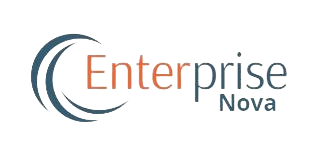Enterprise Architecture (EA) is the discipline of aligning an organization’s business processes, technology, information, and governance in a coherent way so the business goals are supported by the IT strategy. But because organizations differ in size, industry, regulatory pressure, technical maturity, and other factors, many different EA frameworks have been developed. A good EA framework gives structure: helping you plan, document, execute, and govern architecture work. Below are some of the most commonly used frameworks, what makes them useful, and when they are most appropriate.
Classification of EA Frameworks
EA frameworks tend to fall into three main types:
- Comprehensive Frameworks: industry & domain-agnostic, covering the full spectrum of roles, stakeholders, domains, deliverables, governance, etc.
- Industry Frameworks: tailored to a specific vertical (e.g. finance, government, telecom), with domain-specific reference models, regulatory compliance and stakeholder viewpoints already built in.
- Domain Frameworks: focused on one aspect or domain (e.g. security architecture, cloud architecture, risk) providing deep methods & tools there.
Organizations often customize (or combine) frameworks: using a comprehensive framework for overall structure, then industry or domain frameworks where deeper detail is needed.
Key EA Frameworks in Use
Here are several frameworks widely used in practice, along with what they bring to the table.
| Framework | Type/Primary Use | Strengths | Where It Fits Best | Considerations |
| TOGAF (The Open Group Architecture Framework) | Comprehensive | Strong in governance, well-defined method (ADM, or Architecture Development Method), covers business, data, application, technology domains. Widely adopted. | Organizations needing full lifecycle guidance, migration roadmaps, standardization. Good when you need a repeatable process and consistency. | Can be heavy/complex. Needs tailoring; full adoption takes time. Some parts may not be needed in smaller organizations. |
| Zachman Framework | Comprehensive | Very strong for visual taxonomy and stakeholder views (what, how, who, why, when, where). Helps ensure all viewpoints are considered. | Useful when clarity among many stakeholders is needed, or when documenting from many perspectives. For organizations emphasizing clarity and design consistency. | Not a process/methodology: it does not tell you how to build or implement architecture, only how to classify/model. May require pairing with another framework for implementation guidance. |
| FEAF (Federal Enterprise Architecture Framework) | Industry | Designed for government agencies; strong in compliance, performance, standardization, mandated views. | Governments or heavily regulated industries, or when working in the public sector with strict regulatory or policy constraints. | Less flexible; heavy on standardization. Might not adapt well to fast-moving or agile environments without flexibility. |
| DoDAF (Department of Defense Architecture Framework) | Industry | Rich in domains, views, and concern separation; supports complex, mission-critical systems integration. | Large organizations with distributed, complex systems (defense, aerospace, large government bodies) where integration and long lifecycles are common. | Complexity and overhead; might be overkill for simpler business settings. Documentation and work products can become heavy. |
| SABSA (Sherwood Applied Business Security Architecture) | Domain Framework (Security / Risk) | Gives detailed methods for risk, security architecture aligned to business strategy; strong for designing secure systems or governance. | When security/risk is a major domain (e.g. finance, healthcare, regulated industries), or when an organization needs a security framework integrated with its EA. | Focused heavily on one domain (security/risk): might miss business or tech domains unless integrated with broader EA. |
| Integrated Architecture Framework (IAF) | Comprehensive | Broad inclusion of business, technology, information, infrastructure, security, with multiple abstraction levels. Useful in consulting/large enterprise contexts. | Enterprises needing alignment across many functions, or where consulting partners will guide adoption; situations requiring abstraction and detail layers. | May require customization; complexity. Requires organizational maturity to support many layers of abstraction. |
What Makes a Framework “Good”
- Governance & Stakeholder Engagement: how well it builds in oversight, roles, stakeholder communication, decision-making. Without this, architecture becomes documentation without impact.
- Domains Covered: business, data/information, applications, technology, but also security, cloud, integration domains as needed.
- Methodology/Process: the “how” of doing EA (e.g., TOGAF’s ADM) so that architecture is developed iteratively, validated, and delivered.
- Deliverables & Work Products: what artifacts, models, diagrams are produced, how much detail, and how useful for both technical and non-technical stakeholders.
- Fit & Adaptability: ability to be tailored to industry, domain, company scale, culture. A lightweight framework may be better for some, more rigorous for others.
Visualization & Clarity: ability of framework to help visualize complexity: relationships, dependencies, flows etc., in ways understandable across departments.
Choosing the Right EA Framework
When selecting or adopting an EA framework, these steps help:
- Clarify organizational goals and maturity: what is the problem you are solving? Regulatory compliance? Integration? Speed? Innovation?
- Start small: tailor the framework: you do not need to use every part of a large framework. Pick what fits.
- Ensure stakeholder buy-in: the leadership, business, and IT must see value. Without it, EA could wither.
- Measure outcomes & iterate: deliver value early (quick wins), monitor performance, adjust process.
Conclusion
Enterprise Architecture frameworks are tools to bring order, clarity, alignment, and governance to how technology, information, and business integrate in an organization. Popular frameworks like TOGAF, Zachman, FEAF, DoDAF, SABSA, and others serve different needs; some across whole organizations, some for specific domains like security or defense. The key is not choosing the “best” framework universally, but selecting one (or compositing a few) that fits your company’s scale, industry, goals, and maturity, and then using it adaptively.

